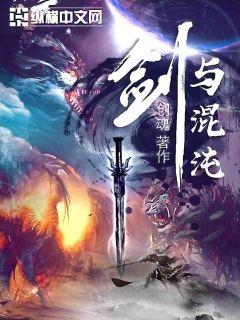
Certainly! Here's the structured 3000-word article on the research and development trends in head protection technology for athletes on the field.
**Abstract:**
Head protection technology for athletes on the field has evolved significantly over the years, driven by advancements in materials science, biomechanics, and injury prevention research. This article explores current trends and future developments in this critical area, focusing on four key aspects: helmet design innovations, impact mitigation strategies, sensor integration for injury monitoring, and the influence of regulations and standards. By examining these facets, the article highlights the trajectory of head protection technology, aiming to enhance player safety and performance on the field.
---
**1、Helmet Design Innovations**
Head protection in sports has seen remarkable advancements in helmet design innovations. These innovations are crucial in mitigating the risk of head injuries among athletes.
Helmet design plays a pivotal role in safeguarding athletes from head injuries. Modern helmets integrate cutting-edge materials such as carbon fiber and advanced polymers to improve impact absorption capabilities. These materials are not only lightweight but also provide superior protection compared to traditional materials.
Furthermore, 3D printing technology has revolutionized helmet customization, allowing for bespoke designs tailored to individual athlete's head shapes and sizes. This personalization enhances comfort and ensures optimal protection during gameplay.
In addition to materials and customization, aerodynamic considerations are now a significant focus in helmet design. Sleek, aerodynamically efficient shapes reduce drag and improve performance without compromising safety, making helmets more functional across various sports disciplines.
Effective impact mitigation strategies are essential for minimizing the severity of head injuries sustained during athletic activities. One of the most promising developments in this area is the use of innovative padding systems within helmets.
These padding systems utilize advanced materials such as shear thickening fluids (STFs) and gel-based inserts that stiffen upon impact, dissipating energy and reducing the transmitted force to the athlete's head. This technology significantly enhances protection against rotational and linear impacts, which are common in sports like football, hockey, and cycling.
Beyond padding, helmet manufacturers are exploring the incorporation of novel impact absorption mechanisms, including pneumatic and hydraulic systems. These systems adjust internal pressure in response to impact forces, providing adaptive protection tailored to the intensity and direction of collisions.
Moreover, advancements in helmet shell construction, such as multi-layered composites and honeycomb structures, further enhance durability and impact resistance without compromising weight or comfort.
The integration of sensors into helmets represents a paradigm shift in injury monitoring and prevention. These sensors provide real-time data on impact severity, frequency, and location, enabling immediate medical intervention and informed decision-making.
Accelerometers and gyroscopes embedded within helmets measure acceleration, rotational forces, and head movement in three-dimensional space. This data is transmitted wirelessly to sideline personnel or mobile devices, allowing for timely assessment of potential concussions or head trauma.
Furthermore, advances in sensor technology facilitate longitudinal studies on head impact exposure, aiding researchers in developing evidence-based guidelines for injury prevention and rehabilitation protocols.
Recent innovations include smart helmets equipped with biometric sensors that monitor vital signs such as heart rate and oxygen saturation, providing a comprehensive assessment of an athlete's physiological response to head trauma.
Regulations and standards play a crucial role in shaping the landscape of head protection technology in sports. Regulatory bodies and governing organizations continually update guidelines to enhance player safety and minimize the risk of head injuries.
Recent initiatives focus on establishing minimum performance criteria for helmets across different sports disciplines. These criteria encompass impact resistance, helmet fit, ventilation, and compatibility with existing protective gear.
Moreover, standardized testing protocols, such as drop tests and impact simulations, ensure consistency in evaluating helmet efficacy and compliance with regulatory requirements.
Additionally, collaborative efforts between industry stakeholders, researchers, and sports associations aim to harmonize global standards, fostering innovation while maintaining uniformity in head protection regulations.
**Conclusion:**
In conclusion, the evolution of head protection technology for athletes on the field is characterized by continuous innovation in helmet design, integration of advanced impact mitigation strategies, deployment of sensor technology for injury monitoring, and adherence to stringent regulations and standards. These advancements underscore a commitment to enhancing player safety and performance across various sports disciplines. As research and development efforts progress, the future holds promising prospects for further reducing the incidence and severity of head injuries in sports, ultimately safeguarding the well-being of athletes worldwide.
Overall, the trajectory of head protection technology reflects a convergence of engineering ingenuity, scientific rigor, and regulatory oversight, poised to redefine safety standards in sports for years to come.
文章摘要:本文探讨了运动界对球员禁止纹身政策的态度。首先分析了纹身在运动员形象中的影响,接着讨论了不同体育组织对纹身规定的立场和执行情况。其次探索了纹身在文化多样性和个人表达自由之间的平衡问题,并分析了球员个人选择与公众形象之间的张力。最后总结了各方观点,提出了可能的未来发展方向。
运动员形象的重要性
纹身在形象塑造中的角色
公众和赞助商的看法
不同体育组织的规定比较
规定的执行与变通情况
公众反响与舆论压力
纹身与文化身份的关联
纹身作为个人表达的权利
如何平衡文化多样性与形象需求
纹身对球员个人品牌的影响
公众接受度的变化
球员自我表达与形象管理的策略
总结:
综上所述,运动界对纹身政策的态度复杂多样,需要平衡形象需求与个人表达自由,未来可能朝着更开放和包容的方向发展。
纹身政策的演变与执行将继续受到公众和运动员个体选择的影响。
### 文章摘要
鲁能集结,一支充满活力和潜力的足球队,近年来崭露头角,队内新星纷纷崛起。本文将从多个角度揭秘鲁能队内新星的崛起,包括培养体系、教练团队、球员个人素质和比赛表现等方面,展现出这支球队的壮大与蓬勃发展。
---
###鲁能足球俱乐部一直致力于建立完善的青训体系。
在青训体系中,注重培养球员的技术、意识和团队合作能力。
俱乐部通过各级别的比赛和训练,为年轻球员提供了良好的成长环境。
###鲁能队的教练团队拥有丰富的执教经验和专业知识。
教练们注重对年轻球员的个性化指导,为他们量身定制训练计划。
团队的凝聚力和专业水平为球员的成长提供了坚实支撑。
###鲁能队内新星们具备出色的个人素质,包括技术、速度和意识。
他们在比赛中展现出了才华,逐渐成为球队的中坚力量。
球员们的积极进取和自我提升精神为球队带来了新的活力。
###鲁能队内新星在比赛中展现出了惊人的潜力和表现。
他们在关键时刻挺身而出,成为球队取得胜利的关键。
球员们的成长和表现为球队赢得了赞誉和信心。
### 总结:
鲁能集结:揭秘队内新星崛起,展现了这支球队的活力和成长。
通过培养体系、教练团队、球员个人素质和比赛表现等方面的分析,我们可以看到鲁能队内新星的崛起不是偶然的,而是多方面因素的共同作用。
文章摘要的内容
尤文图斯足球俱乐部在2018年的球员阵容堪称顶尖,囊括了多位世界级球员和新兴天才。他们的集体实力不仅在国内联赛中展现出色,还在国际赛场上有着深远影响。
2018年,尤文图斯队伍的核心球员包括:克里斯蒂亚诺·罗纳尔多、保罗·迪巴拉、格鲁吉亚·基利尼等。他们的出色表现不仅提升了球队的整体水平,也塑造了俱乐部的国际形象。
尤文图斯2018年的战术风格和战术布局,以及教练马西米利亚诺·阿莱格里的战术理念,对球队的成绩和影响力产生了深远的影响。
克里斯蒂亚诺·罗纳尔多作为当时尤文图斯的重要引援,不仅带来了超群的进球能力,还通过其广泛的影响力提升了尤文图斯的全球知名度和商业价值。
保罗·迪巴拉在球场上的多面手能力,以及在攻防转换中的关键作用,使他成为球队中不可或缺的一环。
格鲁吉亚·基利尼作为尤文图斯的后防核心,他的领导力和稳定性不仅稳固了球队的防线,也为年轻球员们树立了榜样。
此外,门将布冯的经验和冷静,以及马尔基西奥和皮亚尼奇等球员在中场的创造力,都为球队赢得了宝贵的胜利。
尤文图斯在2018年的战术体系以严密的防守和快速的反击著称。阿莱格里教练的布局使得球队能够在关键比赛中表现出色,尤其是在国内联赛和欧洲冠军联赛中频频取得佳绩。
球队在防守端的团结和默契,以及在进攻端的多样化战术,使得他们能够应对各种挑战并取得胜利。
尤文图斯在2018年所取得的成绩,不仅彰显了球队整体实力,也为俱乐部带来了声誉和荣誉。
尤文图斯2018年的球员阵容和表现不仅在意大利国内赛场上获得了赞誉,在国际舞台上也赢得了广泛的关注。
球队在欧洲冠军联赛中的表现,以及一系列国际友谊赛和训练营的举办,使得尤文图斯在全球范围内拥有了庞大的球迷基础。
球员们的社交媒体影响力和商业合作,为俱乐部带来了经济上的收益,同时也进一步巩固了尤文图斯作为顶级足球俱乐部的地位。
总结:
尤文图斯2018年的球员阵容,不仅仅是一支成功的足球队伍,更是一个商业和品牌的象征。他们通过强大的阵容和优秀的表现,提升了俱乐部的国际影响力,并为未来的发展奠定了坚实的基础。
在竞技层面,球员们的个体实力和集体配合使得尤文图斯成为意甲联赛中不可忽视的存在。在商业层面,他们的全球影响力和球迷基础为俱乐部带来了可观的经济收益。
文章摘要:本文将从四个方面对韩国足球联赛:挑战亚洲之巅进行详细阐述。首先,介绍韩国足球联赛的历史和发展,其次分析韩国足球联赛在亚洲足球舞台上的成绩和影响力。接着探讨韩国足球联赛的球队实力和球员质量,最后分析韩国足球联赛的国际影响力以及未来发展方向。
韩国足球联赛自成立以来的发展历程,探讨联赛在韩国足球史上的地位和意义。
联赛从一开始的情况到逐步发展壮大的过程,引领了韩国足球的整体水平提升。
介绍韩国足球联赛的诞生背景和影响,以及对韩国足球运动的推动作用。
分析韩国足球联赛在亚洲足球赛事中的表现,挑战亚洲足坛巅峰的历程和成就。
探讨韩国足球联赛在亚洲冠军联赛中的表现,以及对韩国国家队水平的提升带来的影响。
讨论韩国足球联赛球队在亚洲足球舞台上的竞争力和影响力,以及对亚洲足球格局的影响。
分析韩国足球联赛各支球队的实力对比,以及联赛中涌现出的优秀球员。
探讨球队间的竞争态势,以及球员水平对整体联赛竞争力的影响。
介绍韩国足球联赛俱乐部的培养体系和对年轻球员的重视程度。
分析韩国足球联赛在国际足坛的影响力,以及对外援引进和联赛国际化发展的探讨。
探讨韩国足球联赛在亚洲以及全球范围内的地位和发展前景。
展望韩国足球联赛未来的发展方向,以及如何持续挑战亚洲足球之巅。
总结:
通过四个方面的详细阐述,我们可以看到韩国足球联赛在挑战亚洲之巅的过程中所取得的成就和发展,同时也展望了韩国足球联赛未来的发展方向。随着足球运动的不断发展,韩国足球联赛将继续在亚洲足坛上展现出色表现,为韩国足球事业的发展贡献力量。
文章摘要的内容:球员下体受伤对运动员职业生涯和健康构成重大威胁。本文探讨了预防和康复策略的关键方面,包括训练方法、营养指导、身体机能评估以及心理支持,旨在为运动员提供全面的保护和恢复方案。
在运动训练中,正确的技术和适当的负荷分配至关重要。运动员应通过逐步增加负荷的训练计划来提高体能和力量,避免过度训练引发下体肌肉和韧带的损伤。
另外,定期进行技术评估和调整,以确保运动员的运动技能和姿势正确,减少因错误运动姿势导致的受伤风险。
此外,适当的休息和恢复时间也是训练方法中不可或缺的一部分,它有助于减少疲劳积累和提高身体的整体适应能力。
营养在运动员受伤预防和康复中扮演着重要角色。均衡的饮食可以增强肌肉和韧带的健康,提高身体的抗损伤能力。
特别是蛋白质、维生素和矿物质的摄入对于肌肉修复和韧带强化至关重要。专业的营养师可以根据运动员的具体情况制定个性化的饮食计划,确保其获得足够的营养支持。
此外,保持适当的水分摄入和补充运动所需的能量也是预防和康复策略中不可或缺的一环。
定期进行身体机能评估可以帮助运动员及时发现潜在的问题,采取预防措施。这包括力量平衡、柔韧性和运动姿势的评估。
通过专业的运动生理学测试和身体机能评估,可以量化运动员的身体状态,并制定针对性的训练和康复计划,以提高其运动表现和预防受伤的能力。
定期的身体机能评估还可以帮助运动员和教练了解其训练进展情况,及时调整训练计划以避免过度负荷和损伤风险。
心理状态对于运动员的受伤预防和康复同样至关重要。运动员面对受伤往往会经历情绪波动和心理压力,因此专业的心理支持团队可以提供必要的心理疏导和支持。
通过心理训练和认知行为疗法,运动员可以更好地应对受伤带来的挑战,保持积极的心态和高度的动机水平。
此外,团队的支持和良好的沟通也是心理支持的重要组成部分,可以帮助运动员在康复过程中保持稳定的情绪和信心。
总结:
综上所述,通过合理的训练方法、科学的营养指导、定期的身体机能评估以及有效的心理支持,可以有效预防和帮助运动员康复下体受伤。这些策略不仅有助于提高运动表现,还能保障运动员的健康和职业生涯。
在今后的训练和比赛中,运动员和相关专业团队应密切合作,全面实施这些策略,以最大程度地减少下体受伤的风险,为运动事业的长远发展保驾护航。